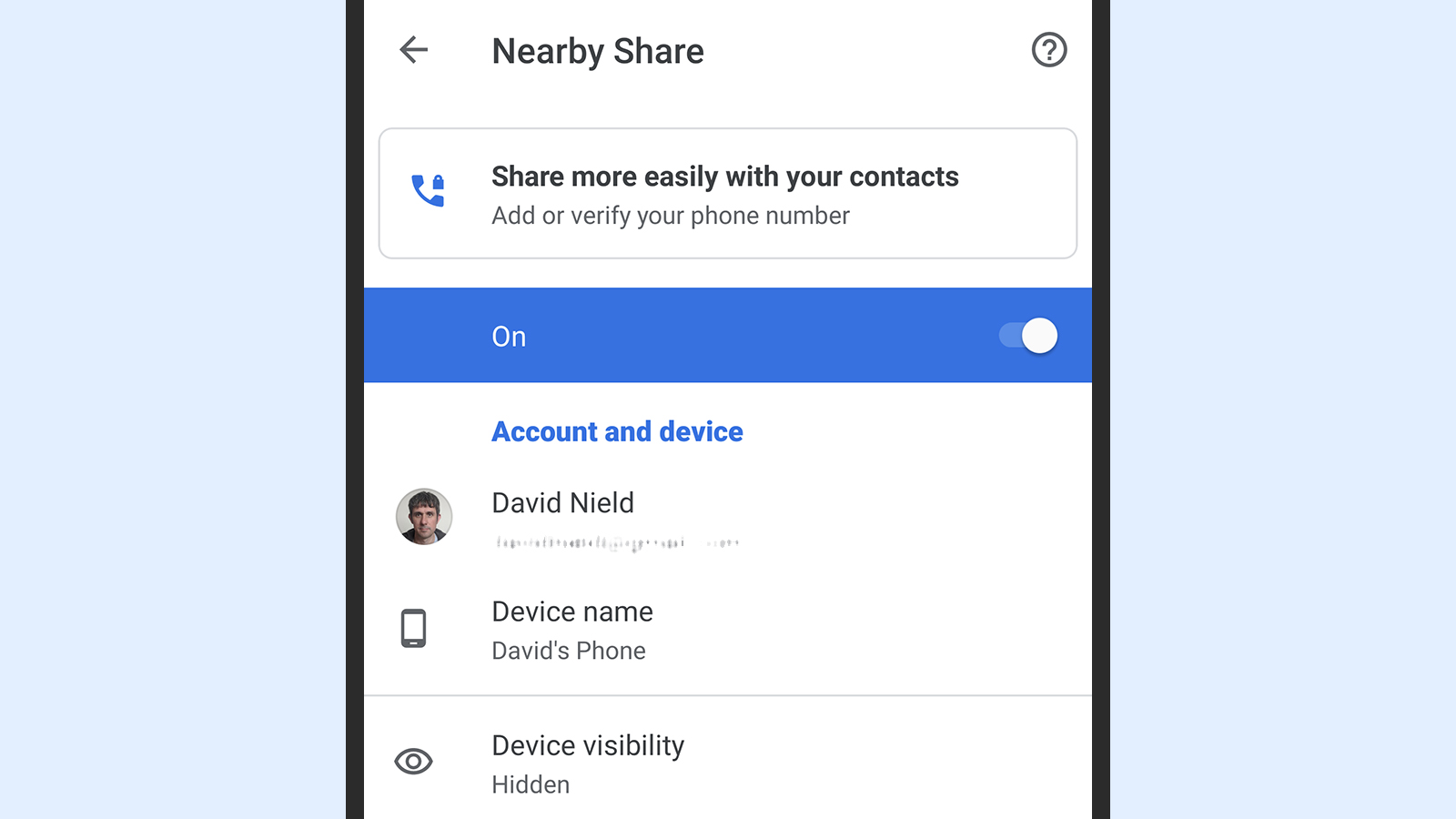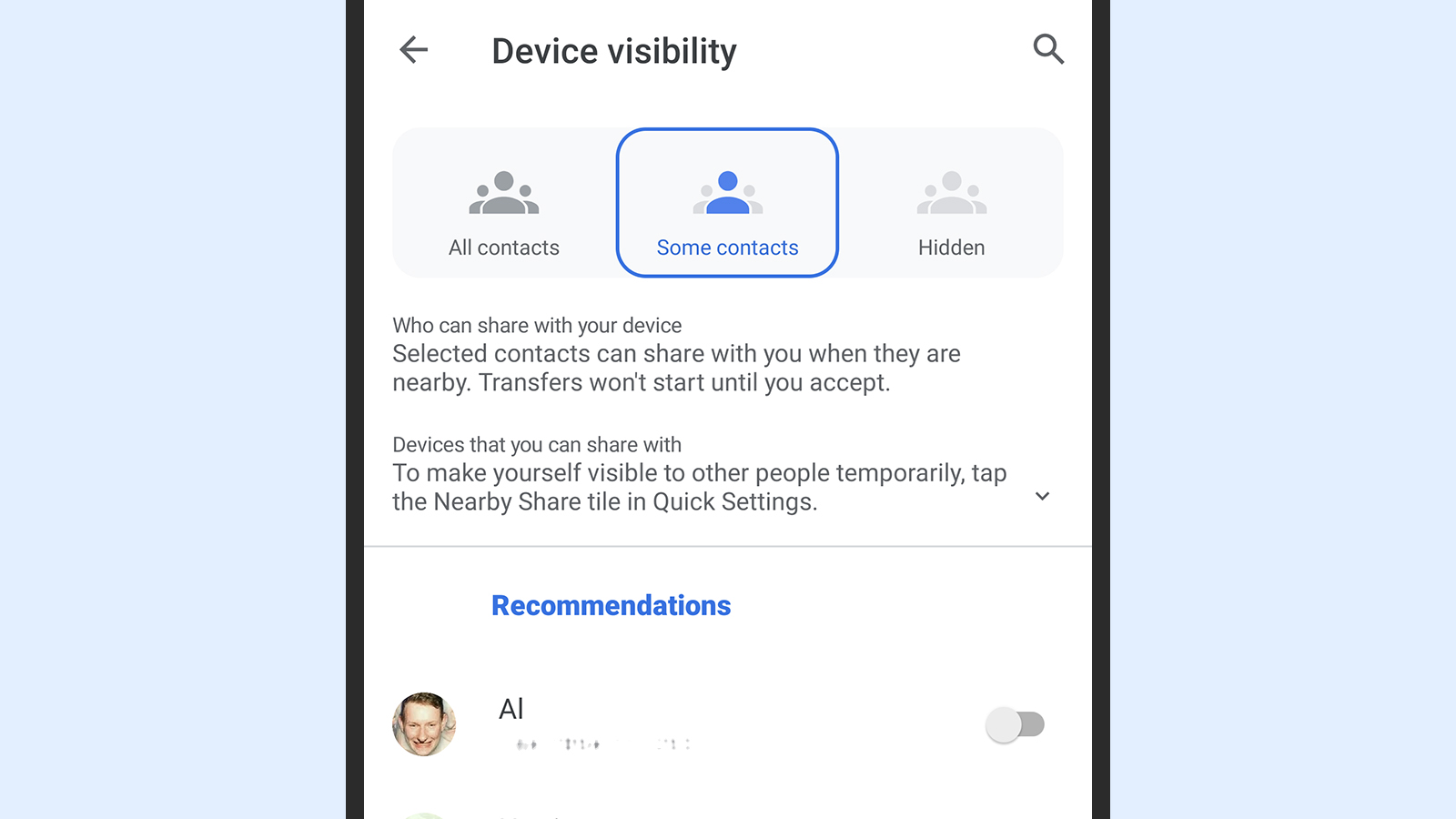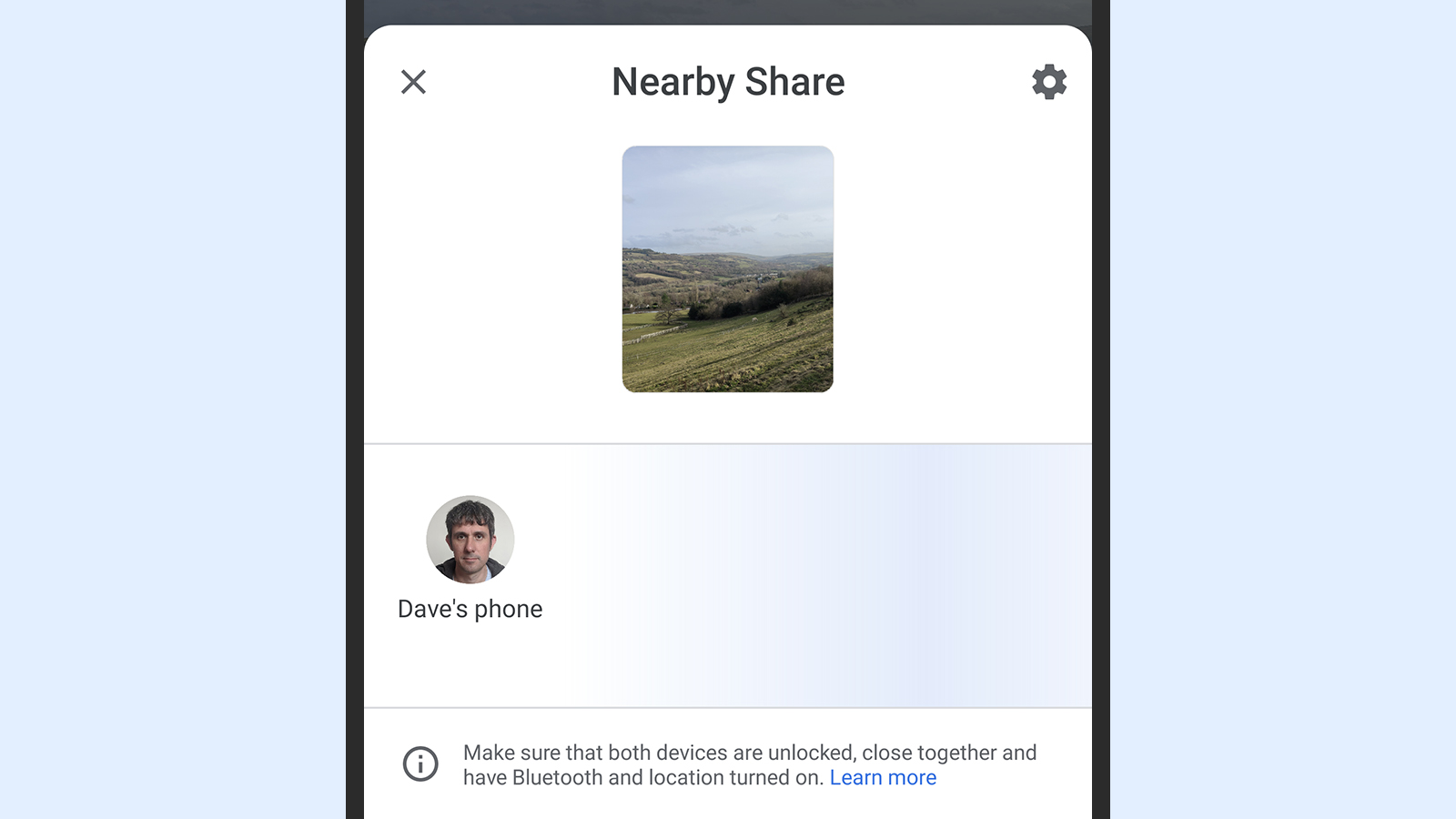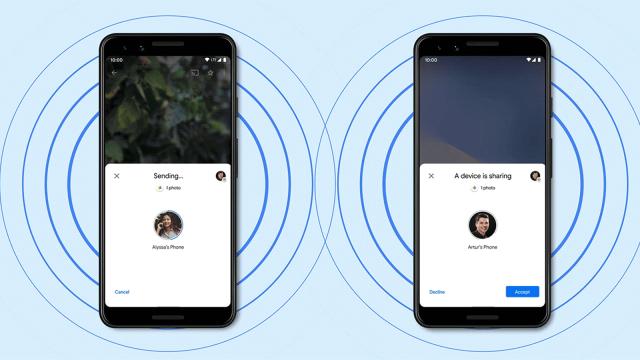Android finally has its own version of Apple’s AirDrop. It’s called Nearby Share, and it makes it easy to quickly send files to another Android device.
Using a file-sharing app requires deep access to your devices to work properly, and going with the official Google option means you don’t have to put your trust in a third-party solution that may not be as secure as it seems. As we’ve seen with an extremely popular Android file-sharing app’s recent malware revelations, you may be putting yourself at risk.
Nearby Share’s Android integration means that it’s very easy to access, too. Based on the time that we’ve spent testing it so far, the tool works as advertised, without any noticeable problems in terms of connectivity or speed. If it’s anything like AirDrop, it’s likely to become the default local file-sharing choice for a lot of Android users.
Nearby Share and AirDrop use a mix of Bluetooth and wifi technologies to quickly move data between two devices. This data could be a photo, a document, a web link or an Android app for example. There are a bunch of app options for sharing files, from Dropbox to WhatsApp, but Nearby Share and AirDrop work as device-to-device connections, so you don’t need to be connected to wifi or even a cell network to drop your photos.

Nearby Share works on all devices running Android 6.0 Marshmallow or later, which should be just about all of the devices still in widespread use. It doesn’t work with iPhones or iPads, just as AirDrop doesn’t work with anything running Android. There’s no sign that Apple or Google would ever want to make our lives that easy and convenient.
The instructions here are for Nearby Share on the stock version of Android 11 that Google installs on its Pixel phones — if you’re using an older version of Android or a phone made by a different manufacturer, some of the menus and screens might vary slightly, though Nearby Share should still be available if you’re running the latest software.
For Nearby Share to work, your device needs to have both Bluetooth enabled (Connected devices, Connection preferences and Bluetooth from Settings) and location reporting enabled (Location from Settings). You can then enable Nearby Share by opening Settings and tapping Google, Device connections, and Nearby Share. You can also just initiate a share to turn the feature on.
You can also tap Google, Device connections, and Nearby Share from Settings to customise how the feature works in more detail. Tap Device name to change the name that other users see during a share, and Data to set whether or not Android can use wifi and cell networks to transfer files if necessary. You can disable this and keep shares fully offline if you want to.

Tap Device visibility to set how easily you can be found by other people. Pick All contacts, and everyone in your contacts list will be able to see your device when they start a share; pick Some contacts, and only the people you select will be able to see your device. This is assuming you have Nearby Share enabled on your device of course — if you don’t, no one will be able to see you, and you won’t get any prompts to receive shares.
The final option is Hidden, which means no one can see you until you make your device visible. The difference between this and just turning Nearby Share off completely is that you will get a notification prompt if an Android device in close proximity has started a share. You can then tap the prompt to show your device.
Whichever option you choose here, you’ll always be asked to confirm the file transfer once the sender has picked your phone as a destination, so you won’t suddenly find your phone bombarded with pictures or videos that you didn’t ask for. These options don’t affect your ability to send files with Nearby Share either, or which devices you’ll be able to see when you do.
Nearby Share will appear as an option whenever you hit the standard share button anywhere in Android. You might see a Nearby button or a Nearby Share button, depending on the app. If you don’t see the option, you might have to tap the More button to see it, or double-check the feature is actually enabled on your device.

With a share initiated, you simply choose the device you want to share with. The recipient will then be asked to confirm the file transfer, and off it goes. You don’t have to keep the Nearby Share panel open while the data is sent and received, because the process will carry on in the background until it’s completed.
“Nearby Share then automatically chooses the best protocol for fast and easy sharing using Bluetooth, Bluetooth Low Energy, WebRTC or peer-to-peer wifi — allowing you to share even when you’re fully offline,” Google explains.
The feature is also rolling out to Chromebooks in the near future, though it hasn’t gone live quite yet. You can enable it with the right flags.
Nearby Share and AirDrop are very similar, though the options for keeping your phone visible differ slightly. If you pick General then AirDrop from Settings, you can choose Receiving Off (no one can see your device), Contacts Only (only contacts can see your device), or Everyone (everyone can see your device).
Unlike Nearby Share, you won’t see a prompt to become visible if you’re hidden and someone is using AirDrop nearby — you’re either visible or you’re not. Like Nearby Share, no matter what your visibility settings, you’re still going to have to manually approve transfer requests before any data gets moved over.
